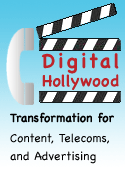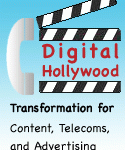The Rise of the Niche Will Transform the Mass Model—The UGM Threat Is the Opportunity
 The advertising industry is at a crossroads. It came of age during the Industrial Economy, and explosive growth coincided with the development of the mass media and the focus on “brand” TV and print advertising. Big media and advertising reflect Industrial Economy values and sensibilities: produce big numbers efficiently and innovate when necessary. Amortize existing investments. The problem is, Knowledge Economy customers want to be communicated with as individuals. Since advertising’s processes have been built with big numbers in mind, they are expensive, and the numbers don’t work when agencies try to address niches. The advertising industry is at a crossroads. It came of age during the Industrial Economy, and explosive growth coincided with the development of the mass media and the focus on “brand” TV and print advertising. Big media and advertising reflect Industrial Economy values and sensibilities: produce big numbers efficiently and innovate when necessary. Amortize existing investments. The problem is, Knowledge Economy customers want to be communicated with as individuals. Since advertising’s processes have been built with big numbers in mind, they are expensive, and the numbers don’t work when agencies try to address niches.
Efficiency in advertising has given rise to a value chain that is as heavy with inflexible infrastructure as the airlines’ hub and spoke system. Advertisers remain focused on “reach,” the number of eyeballs that view their messages (and respond when it’s measurable). That’s how advertising effectiveness is measured. Advertisers are resistant to changing this system, and that makes emerging technologies like mobile video and social networks of secondary interest to them. Meanwhile, innovators are developing technology and offerings to […]
But Legacy Thinking Makes Agency Ecosystem Vulnerable to Disruptive Change—Who Will Be Their Southwest?
 Technology is remaking the advertising business because it is beginning to enable individualized targeting via automated tools. It is not a moment too soon. Technology is remaking the advertising business because it is beginning to enable individualized targeting via automated tools. It is not a moment too soon.
The ultimate context for this session is that technologies are driving interactivity, which is becoming the default for marketing communications. Legacy players in the marcom value chain have mixed feelings: they want to leverage their investments in legacy processes, people and relationships, and many of their clients are not pushing for interactive or its latest incarnation, digital video.
Thought leaders and visionaries are frustrated by their colleagues’ reticence because they perceive that marketers’ worst fear—irrelevance—will soon ensue unless they begin to make serious investments in digital video and Web 2.0, which highlights peer-to-peer interactivity.
When it burst into public view with the growing popularity of the Internet (“Web 1.0”), “interactivity” represented new capabilities and sensibilities. Viewers of marcom messages could react to the messages by clicking, and these clicks could be tracked very economically.
 However, this was merely a brief overture […] However, this was merely a brief overture […]
The Challenge of Consumer/Advertising Misalignment: How to Finance Free Content
 At Digital Hollywood Chicago, few disputed that broadcast TV and mass advertising’s golden age had passed and that several technologies and cultural shifts were pressuring senior marketers to change. To fully appreciate this challenge, one has to consider the three screens through which most consumers experience “content. ” What consumers do with the changing capabilities of each screen changes their expectations and behaviors about their experience with all three screens, dramatically increasing opportunities and threats. Interactivity is increasingly available for TV (video). Convergence among the three screens is another important thread. Younger generations of consumers have little tolerance for the concept of mass advertising. At Digital Hollywood Chicago, few disputed that broadcast TV and mass advertising’s golden age had passed and that several technologies and cultural shifts were pressuring senior marketers to change. To fully appreciate this challenge, one has to consider the three screens through which most consumers experience “content. ” What consumers do with the changing capabilities of each screen changes their expectations and behaviors about their experience with all three screens, dramatically increasing opportunities and threats. Interactivity is increasingly available for TV (video). Convergence among the three screens is another important thread. Younger generations of consumers have little tolerance for the concept of mass advertising.
The most rapacious symptom of the weakness of the mass broadcast advertising model is the widespread adoption of the PVR (personal video recorder), which enables (home) viewers to record TV programs—and to skip advertisements. A couple of eye-opening facts: 1) on average, TV programming contains 8.5 minutes of advertisements during each 30 minute segment of programming and 2) 70% of adverts are fast-forwarded through or eliminated. And these numbers pertain to (mostly) non-digital (analog) […]
Mobile Video: A Perfect Storm for User-Generated Content?
 At Digital Hollywood Chicago, mobile was constantly heralded as the emerging “third screen” because it would enable content consumption regardless of time or place, and most speakers posited that video would grow significantly as a portion of all content. However, there is little video content available for mobile viewing, so why should consumers get excited about it? Will mobile shine as the most personal view into the consumer, or will it turn out to be the third wheel? At Digital Hollywood Chicago, mobile was constantly heralded as the emerging “third screen” because it would enable content consumption regardless of time or place, and most speakers posited that video would grow significantly as a portion of all content. However, there is little video content available for mobile viewing, so why should consumers get excited about it? Will mobile shine as the most personal view into the consumer, or will it turn out to be the third wheel?
All mobile value chain players are frenetically trying to build a new digital world around the mobile device, and this world will be comprised of the familiar triad: devices, networks and content, much of which will be video. Currently, video is the highest value content medium. This session examined the current stage of development to technology and business models.
Internet pioneers who remember the thrill of squealing modems connecting in the early days have a useful metaphor with which to regard video on mobile. We are very much in the early days: networks in most geos are inconsistent, and their ability to […]
|
|
 The advertising industry is at a crossroads. It came of age during the Industrial Economy, and explosive growth coincided with the development of the mass media and the focus on “brand” TV and print advertising. Big media and advertising reflect Industrial Economy values and sensibilities: produce big numbers efficiently and innovate when necessary. Amortize existing investments. The problem is, Knowledge Economy customers want to be communicated with as individuals. Since advertising’s processes have been built with big numbers in mind, they are expensive, and the numbers don’t work when agencies try to address niches.
The advertising industry is at a crossroads. It came of age during the Industrial Economy, and explosive growth coincided with the development of the mass media and the focus on “brand” TV and print advertising. Big media and advertising reflect Industrial Economy values and sensibilities: produce big numbers efficiently and innovate when necessary. Amortize existing investments. The problem is, Knowledge Economy customers want to be communicated with as individuals. Since advertising’s processes have been built with big numbers in mind, they are expensive, and the numbers don’t work when agencies try to address niches.
 However, this was merely a brief overture […]
However, this was merely a brief overture […] At Digital Hollywood Chicago, mobile was constantly heralded as the emerging “third screen” because it would enable content consumption regardless of time or place, and most speakers posited that video would grow significantly as a portion of all content. However, there is little video content available for mobile viewing, so why should consumers get excited about it? Will mobile shine as the most personal view into the consumer, or will it turn out to be the third wheel?
At Digital Hollywood Chicago, mobile was constantly heralded as the emerging “third screen” because it would enable content consumption regardless of time or place, and most speakers posited that video would grow significantly as a portion of all content. However, there is little video content available for mobile viewing, so why should consumers get excited about it? Will mobile shine as the most personal view into the consumer, or will it turn out to be the third wheel?